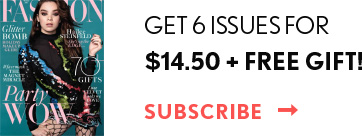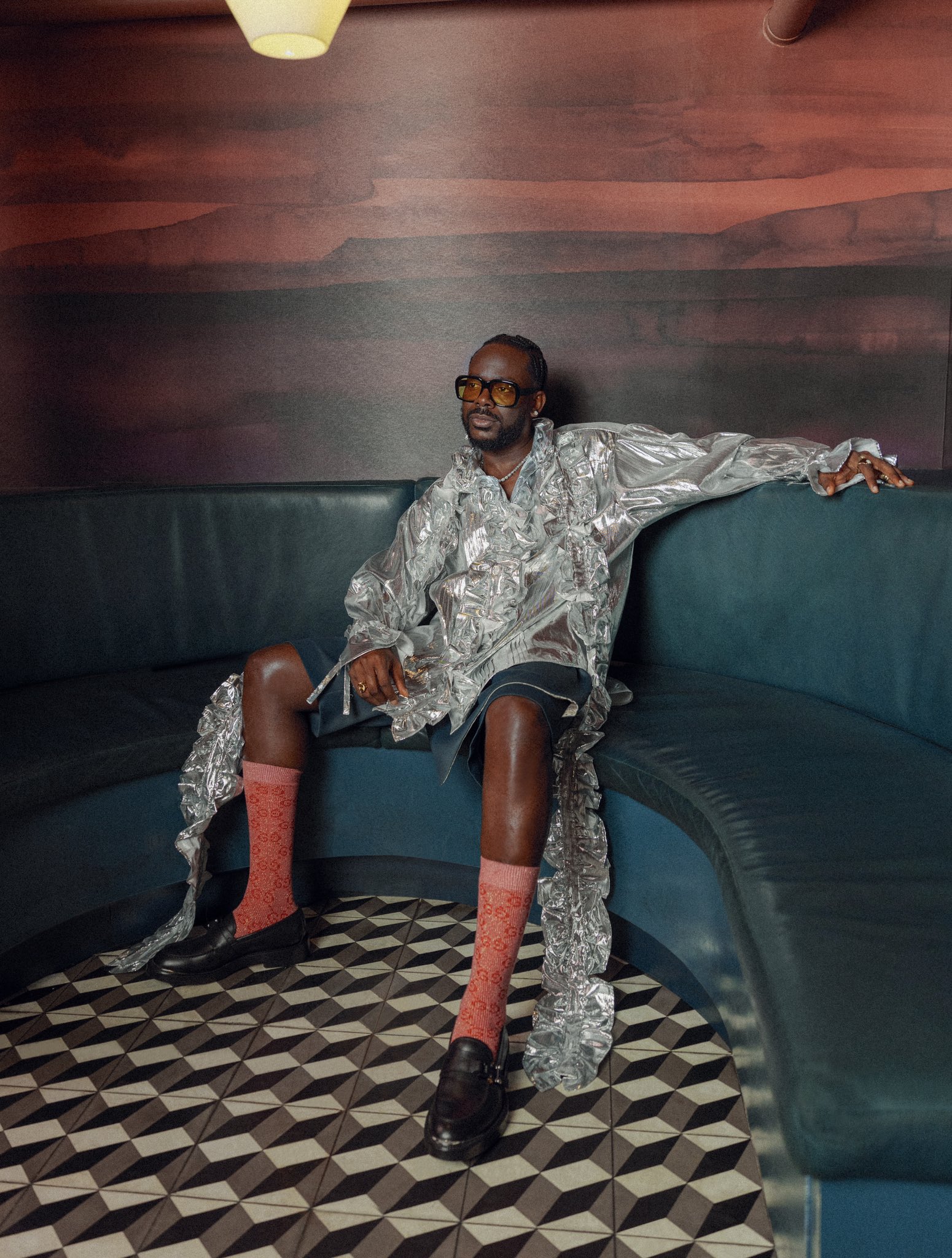In addition to Adekunle Gold’s vocal texture and lyrical abilities, his style – read as a fashion statement – has evolved with the unique coherence that his music has. His musical creations showcase a distinctive place for each fashion era, making it clear that no matter which one is your favourite, they all contribute uniquely to his artistic repertoire.
By Abioye Damilare Samson
One of the most evident ways fashion and music form a nexus is through iconic looks and fashion statements made by musicians. Artistes have long used fashion as a visual extension of their musical personas. These signature styles not only become synonymous with the artistes themselves but often set broader fashion trends — influencing die-hard fans and the general consumers of their art. Think of Afrobeat legend, Fela’s style of rocking underwear publicly to show his apathy towards the European ways of dressing, or think of the iconic Afro-Fusion legend, Lagbaja, known for his signature mask and African-inspired costumes that convey a sense of mystery or anonymity, allowing the focus to be on his music and message rather than on his personal identity. Think then of Adekunle Gold in Kampala prints in 2015, and picture him in the present day as his style has evolved to resonate with a sophisticated fusion of contemporary silhouettes; braided hair and flamboyant accessories such as gold necklaces and rings.
Born Adekunle Almoruf Kosoko, it can arguably be said that Adekunle Gold is one African-born artiste whose artistry is as comprehensive as it is profound. With a host of studio albums, top-charting singles, concerts, and visual projects in his discography, Adekunle Gold stands out as one artiste who possesses a unique ability to tell a story through his music. This has been evident since 2014 when he released “Sade” — a cover of the famous band One Direction’s “Story of My Life” — where he serenaded the eponymous Sade, pleading for her hand in marriage. While “Sade” is not originally his debut track, it is the song that ushered him into the music scene before getting signed to the YBNL record label in 2015.
Among Nigerian music enthusiasts, there seems to be a widely debated notion that Afropop has two kinds of audiences: those who enjoy feel-good tunes, characterised by an appreciation for uplifting and positive melodies, and those who prefer more ‘deep’ music that leans towards more thoughtful and conscious lyrics. Adekunle Gold’s music, however, defies this categorisation, straddling the line between both. With his music, there’s something for everyone.
But in addition to his vocal texture and lyrical abilities, his style – read as a fashion statement – has evolved with the unique coherence that his music has. His musical creations showcase a distinctive place for each fashion era of Adekunle Gold, making it clear that no matter which one is your favourite, they all contribute uniquely to his artistic repertoire.
Circa 2014 — before he fully embraced a pop-leaning music style — Adekunle Gold had a unique Yoruba Highlife/Juju sound that matched perfectly with his fashion signature: Adire. His classic Adire prints and Afrocentric style epitomised indigenous southwestern fashion and branded him as someone connected to his Yoruba roots. During this ‘Adire era,’ Adekunle Gold produced lush ditties characterised by Highlife baselines, including tracks such as “Beautiful Night,” “Paradise,” and “Ready” from his classic debut album, Gold, and heartfelt ageless tunes like “Fame” and “Ire“, featured on his sophomore album, About 30.

It’s no surprise how Adekunle Gold started with the Urban Highlife genre. In an interview with Turntable Chart last year, the singer revealed that his genre preference came from listening to his father’s collection of indigenous Yoruba music. Thus, he found inspiration in Yoruba Highlife luminaries such as the Lijadu Sisters, King Sunny Ade, and K1 De Ultimate, whose musical influences played a significant role in his artistic journey. Similar to the legendary styles of these legends, Adekunle Gold’s fashion choices weaved traditional elegance with modern nuances.
This connection to his roots as a Yoruba man became evident across multiple facets of his artistry, notably in music videos like “My Life“. In this particular visual representation, Adekunle Gold not only adorned his gold short-sleeved Agbada attire but was accompanied by drummers and friends immersed in the festive ambience of a traditional Yoruba gathering known as Owambe. In “Orente”, another track off his Gold album, he extols his significant other, depicting a woman whose authentic affection transcends concerns about her financial situation. The deliberate incorporation of Adire attire in these visuals not only enhances the visual appeal but also serves as a powerful extension of the thematic elements of the music, one that reinforces the symbiotic relationship between his music and fashion through blending cultural elements into the storytelling.

For an artiste operating on a spectrum, it’s important to note that artistic phases are fluid and can evolve. Adekunle Gold’s Urban Highlife era was significant, and between 2015 to 2018 — the time with which he released his debut and sophomore albums — we witnessed a distinct Yoruba Highlife/Juju sound that corresponded with Adire and cultural fashion. The evolution of his style and musical approach beyond this era reflects the dynamic nature of artistes and their continuous exploration of new creative dimensions.

By the time he released his third album, Afro Pop Vol 1 in 2020, Adekunle Gold had significantly shifted his style and overall music. The freedom to transition his art and aesthetics is the stuff of genius. Bringing an entirely new sound to the table, Adekunle Gold was no longer the same folk artiste with the Adire that we saw at his debut. He experimented with more pop-leaning melodies in songs like “Something Different”, infusing the track with contemporary elements and a more mainstream sound. This experimentation was not limited to just the sound; it extended to the lyrical content as well, as seen in the track, “Pretty Girl” featuring Patoranking where he introduces more sensual and hedonistic themes departing from familial subjects explored in his previous love songs.

The shift in musical style is paralleled by a visual transformation. As part of this transition, Adekunle Gold presented a new persona as revealed on the project’s album cover. This new alter-ego is characterised by long beaded dreads, loose vintage attire, adorned with bling necklaces, and accentuated by silver rings, portraying an artiste saddling between two borders; the modern and chic fashion of the present times, paired with retro styles to create a nostalgic effect.
The release of Adekunle Gold’s fourth album, Catch Me If You Can, in 2022, introduced a new dimension to his music and his fans. The album cover for this project is often the most recognisable of his works because of its drastic shift from what fans were accustomed to seeing from him. The choice to depict Adekunle Gold in mid-air in his orange attire symbolises a departure from the familiar and a willingness to take risks in his musical journey.
We see a more self-aware artiste who acknowledges his growth and evolution. Taking the title literally, we can only catch him or continue to watch him evolve. We find Adekunle Gold implementing more into his style and merchandise, with multi-coloured durags, tailored suits, vintage shirts, and baggy pants as seen in music videos like “High” featuring Davido, and “It Is What It Is”. This style serves as a visual representation of his dynamic approach to both music and fashion, inviting audiences to witness his ongoing metamorphosis and growth.

His most recent album, Tequila Ever After, was released in late July 2023 and, as expected, brought forth a newer aesthetic and alter ego for Adekunle Gold. He explores themes of growth, peace, and love, with more experimentations with sound and lyricism, such as seen on tracks like “Chasing Peace of Mind” featuring Habib Koite and Ami Faku. His talent in creative direction also shines through, exemplified in his attention to detail, colour, and stylistic choices, evident in the precision with which he crafts each element of his album cover, ensuring that every aspect contributes meaningfully to the overall narrative of the project.

He continues to showcase personal growth through the visual representation of his musical phases, enhancing them with exceptional tailoring and craftsmanship. Prior to the launch of the fourth album, Adekunle Gold joined forces with Pharrell Williams, a featured artiste on the album, in a significant debut as Louis Vuitton’s creative director for menswear. In the accompanying image, he exudes comfort in a Louis Vuitton blue jacket paired with flared pants and black loafers.
In September, Adekunle Gold also revealed his partnership with the Adidas LFSTLR Collection for Manchester United, providing an opportunity for him to imprint his unique style while dazzling in white streetwear. As he advances in both music and fashion, the anticipation is that collaborations with fashion brands will become increasingly regular, reflecting his evolving presence and influence in these creative spheres.
It’s uncommon to see an artiste undergo so much growth in all aspects of their public image in such a complex way. Whether you prefer the earlier or present styles of Adekunle Gold, in fashion style or music, there is no denying that his originality has been a huge part of his evolution as a creative singer, songwriter, and fashion icon who is, without doubt, one of the most complete creators in the music industry.
Abioye Damilare is a music journalist and culture writer focused on the African entertainment Industry. Reading new publications and listening to music are two of his favourite pastimes when he is not writing. Connect with him on Twitter and IG: @Dreyschronicle.






